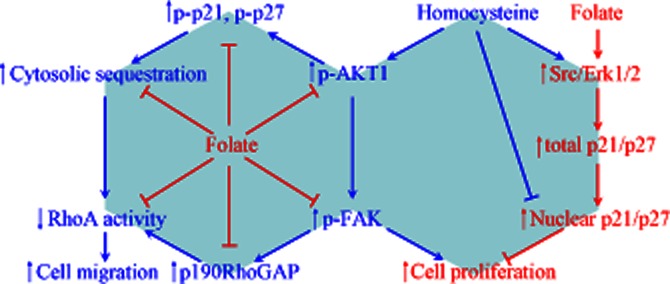Figure 7.

Schematic representation of the signalling pathways and molecular mechanisms involved in the anti-proliferative and anti-migratory effects of folate on homocysteine-treated RASMC. Both homocysteine and folate treatment increased p21 and p27 induction through a Src-Erk-dependent pathway, whereas their differential effects on AKT1 (de)phosphorylation caused different outcomes in the cytosol-nuclear distribution of p21 and p27. The increased nuclear fraction of p21 and p27 induced by AKT1 inactivation resulting from folate treatment contributed to the anti-proliferative effect in RASMC. By contrast, activation of AKT1 following homocysteine treatment increased p21 and p27 phosphorylation, resulting in their increased cytosolic sequestration and increased phosphorylation of p190RhoGAP. This contributed to RhoA inactivation, leading to the pro-migratory effect of homocysteine on RASMC. Folate treatment prevented the effects of homocysteine by activating RhoA through the inhibition of AKT1-mediated signalling pathways.
